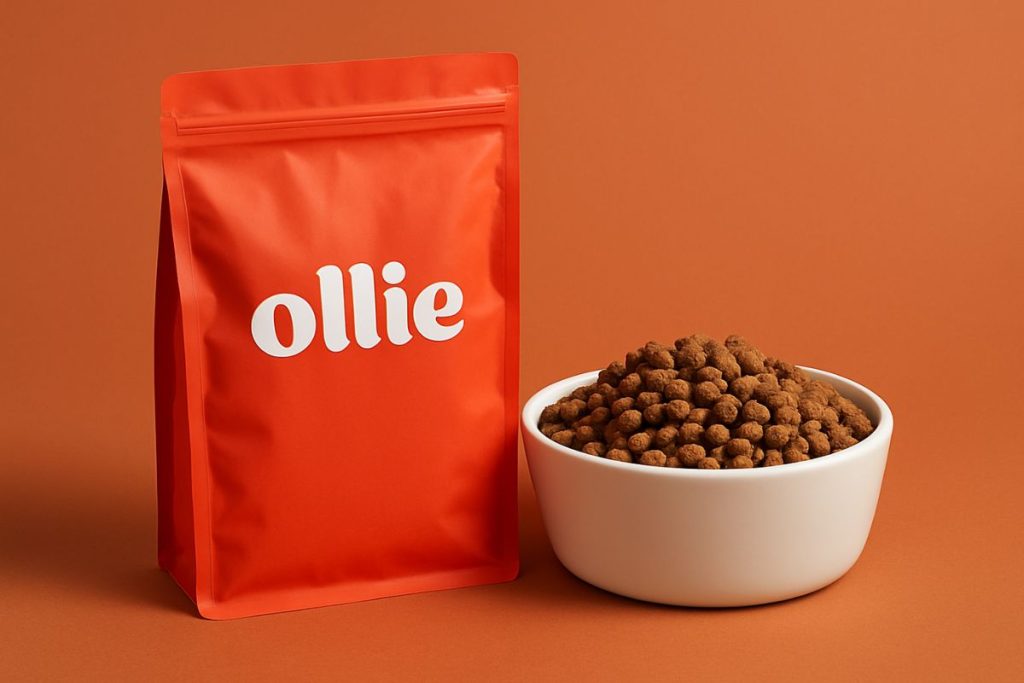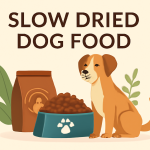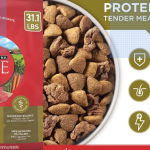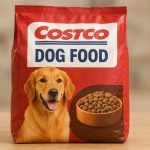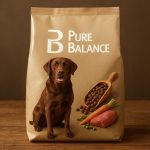Great! I’ll create a fully optimized, SEO-friendly 4000-word blog post titled “Ollie Dog Food: Fresh, Healthy Meals for Dogs.” It will target the primary keyword ‘farmers dog food’ and naturally incorporate secondary keywords such as homemade dog food, best dog food for allergies, raw dog food, and freshpet dog food. I’ll follow all modern on-page SEO practices, include structured headings, an engaging introduction and conclusion, FAQs, an image with ALT text, and compelling meta tags.
I’ll let you know as soon as the article is ready for your review.
Meta Title: Farmers Dog Food: Fresh, Healthy Dog Meals Delivered
Meta Description: Farmers Dog Food vs Ollie: Explore fresh, healthy dog meals including homemade recipes, raw and Freshpet foods, plus allergy-friendly formulas.
Farmers Dog Food vs Ollie Dog Food: Fresh, Healthy Meals for Dogs
In recent years, pet parents have increasingly sought out fresh dog food that rivals human meals. Services like Ollie and The Farmer’s Dog (often referred to as Farmers Dog Food) deliver fully cooked, human-grade recipes tailored to your dog’s needs. This trend is booming: analysts project the U.S. fresh pet food market will grow by about $3.2 billion by 2029 (around 21% annual growth) as owners demand more wholesome, minimally processed diets.
Big picture: U.S. pet food spending is surging. Americans spent $64.4B on pet food and treats in 2023 (up 10.8% from 2022). Notably, refrigerated/frozen dog food (the category that includes fresh meals) grew about 29% year-over-year. This confirms more pet parents are investing in premium, fresh diets.
For dogs, the results of eating real, whole-food diets can be noticeable. Owners often see better digestion (smaller, firmer stools), healthier coat condition (shinier, softer fur), and more stable energy. Companies highlight these benefits: The Farmer’s Dog cites research that “fresh diets do demonstrate a number of pet health benefits”, reflecting expert backing. Fresh meals typically include chunks of lean meat and vegetables. This extra moisture and fiber can improve hydration and gut health compared to drier kibble.
Another advantage is transparency: you know exactly what’s in your dog’s bowl. Ingredients are cooked with minimal processing, so natural vitamins and minerals remain intact. Unlike many dry foods, fresh meals use no meat byproducts or cheap fillers – just real cuts of meat and produce. This clean-label approach appeals to owners who want to avoid artificial additives. Many fresh dog foods also add beneficial fats (like fish oil) and supplements for joint and immune support.
Whether you’re curious about ordering from Ollie or trying farmers dog food (The Farmer’s Dog), this guide will break down the similarities and differences. We’ll also cover Freshpet’s store-bought fresh options, homemade and raw diets, and tips for dogs with allergies. Along the way, we’ll highlight expert nutrition advice and examples. Let’s dive into the world of fresh dog food and find what suits your canine companion best!
What is Fresh Dog Food?
Fresh dog food is made from high-quality, human-grade ingredients (meats, vegetables, fruits, and grains) that are gently cooked to preserve nutrients. This can lead to real health improvements. Many owners report shinier coats, firmer stools, and more energy after switching from traditional kibble to a fresh diet. For instance, dogs with sensitive stomachs often have better digestion when fed freshly prepared recipes, thanks to the added fiber and moisture.
Unlike most dry foods, fresh meals never include meat byproducts, corn fillers, or artificial additives. A typical fresh meal might contain chicken, sweet potatoes, spinach, and a splash of fish oil. These whole ingredients provide natural vitamins and antioxidants. Fresh brands cite studies suggesting such diets can improve skin, coat, and even joint health over time.
Fresh formulas often include more moisture and fiber than kibble, aiding digestion. For example, including carrots or pumpkin in a meal boosts fiber, which can improve stool quality. The extra water also helps keep dogs hydrated, supporting kidney and urinary health. Additionally, fresh food plans are often customizable: brands like Ollie will adjust the calorie or protein level based on your dog’s weight and activity. Crucially, many fresh food providers ensure their recipes meet AAFCO nutritional standards.
Key benefits of fresh dog food include:
- Human-grade nutrition: Whole meats and produce of similar quality to human food.
- No fillers or additives: Focus on real ingredients, no corn gluten or artificial preservatives.
- Vet-formulated: Recipes are balanced by veterinary nutritionists.
- Variety of proteins: Multiple options (beef, chicken, lamb, turkey, etc.) keep picky eaters interested.
- Hydration & fiber: Veggies (like peas, spinach) add water and fiber for digestion.
- Balanced diet: Often labeled “complete & balanced” by AAFCO, covering all nutrient needs.
In summary, fresh dog food is like feeding your pet a high-quality home-cooked meal. You see every ingredient, and the diet is designed to support overall health. Many owners find that after switching, their dogs have better coats, digestion, and energy. For example, many owners report dogs eagerly anticipate mealtime on a fresh diet.
Ollie Dog Food: Customized Fresh Meals
Ollie is a subscription service that delivers fresh meals customized to your dog. After you fill out an online profile (age, breed, weight, allergies, etc.), Ollie’s veterinary nutritionists create a personalized meal plan. Ollie’s recipes feature whole proteins and produce – options include beef, chicken, lamb, pork, and turkey. Each recipe is gently cooked and then frozen to lock in nutrients and flavor.
Image: Bowl of fresh, human-grade dog food (with chicken and peas) ready to serve.
Ollie also focuses on convenience. Your first box includes a measuring scoop and a ‘Puptainer’ container. You use the scoop to portion each meal and store leftovers in the Puptainer for easy fridge storage. The subscription is flexible: you choose how many fresh meals per week and can adjust or skip deliveries online. Typically, you’ll receive enough food for 1–2 weeks at a time.
For example, a 25-pound moderately active dog on Ollie might use about $40–$50 per week in meals (before discounts). New customers often get 50–60% off the first box. Ollie’s website even has a free feeding calculator to estimate cost and portions. One reviewer noted, “Ollie is one of the most expensive fresh dog food brands… significantly costlier than The Farmer’s Dog”, which is something to consider if budget is a concern.
Key features of Ollie:
- Customized meal plans based on your dog’s profile (age, weight, allergies).
- Real, human-grade ingredients (whole meat, whole veggies).
- Multiple protein recipes (beef, chicken, lamb, turkey, pork) to satisfy picky eaters.
- Includes a scooper and storage container for easy portioning.
- Grain-free (no corn, wheat, soy) and no artificial preservatives.
Ollie Pros: Very fresh, high-quality food with variety. Vet-formulated plans simplify nutrition. The included scoop and container make feeding and cleanup simple. Many dogs love the taste, and owners often see improved digestion and coat condition after switching.
Ollie Cons: Price is higher than most kibble. Ollie’s dry recipes come only as a mix-in, not standalone. You also must measure each meal using the scoop or app, since the packages aren’t pre-marked. For example, one user’s dog loved the beef and lamb recipes but refused pork and turkey, illustrating that some trial-and-error may be needed.
The Farmer’s Dog (Farmers Dog Food)
The Farmer’s Dog is another fresh-dog-food subscription – often what people find by searching for Farmers Dog Food. It works similarly to Ollie: you input your dog’s details and receive tailored, vet-balanced meals. The Farmer’s Dog emphasizes science and nutrition, highlighting that Board-Certified Nutritionists craft each recipe to AAFCO standards. Their slogan “you shouldn’t be the only one eating healthy” drives home that their dogs’ meals use human-quality ingredients.
A standout feature is the packaging. The Farmer’s Dog delivers meals in pre-portioned pouches, each labeled with exactly how many to feed per day. This takes the guesswork out of portioning – you just count out the right number of pouches at each meal. Many dog owners love this convenience. The company also shares customer testimonials emphasizing results: one vet wrote, “I’ve noticed my dogs’ poops look healthy, and they are so excited for their meals”, suggesting the food is both appetizing and well-digested.
Farmers Dog Food Pros: Excellent portion control with pre-measured pouches. High-quality ingredients in simple recipes (each includes meat, veggies, oils). Many veterinarians recommend it and even feed it to their own dogs. The company offers good support for transitioning.
Farmers Dog Food Cons: Premium price (usually on par with Ollie). Fewer flavor choices overall. Some users find the website interface less user-friendly. If your dog dislikes one recipe, you might need to mix brands or supplements. As one blogger noted, “it’s significantly costlier than Farmers Dog,” ironically highlighting Ollie’s higher price.
In practice, Farmers Dog Food and Ollie both rank among the top fresh meal options. The main differences are packaging style (pouch vs. scooping) and menu variety. Trying sample packs of each can reveal which your dog prefers. Ultimately, either is vastly superior to generic pet foods.
Freshpet Dog Food: Refrigerated Store Brands
If a home delivery isn’t convenient, Freshpet is a major refrigerated dog food brand you can buy in stores. Its motto is “It’s not dog food, it’s food food,” emphasizing human-quality ingredients. Freshpet recipes list real meat (like chicken or beef) as the first ingredient, plus vegetables and grains. For example, a chicken dinner recipe might include chicken, brown rice, carrots, and peas – all steam-cooked and packed fresh.
Freshpet tubs (1–4 lbs) sit in your home fridge. You simply scoop out a portion and serve it. Because it’s commercially made, Freshpet food meets AAFCO nutrient standards and is complete for all life stages. Many dogs on Freshpet show health improvements: owners often report shinier coats and firmer stools after switching from low-quality kibble.
- Pros: No subscription required – buy as needed. Contains whole ingredients with no chemical preservatives. Often priced just slightly above premium kibble per pound. Widely available (Petco, Petsmart, many groceries, even Costco).
- Cons: Very short shelf-life once opened (must refrigerate and use within a few days). Requires planning shopping trips. Limited recipes (mainly chicken or beef flavors).
Freshpet also offers lines like Freshpet Simple for dogs with sensitivities (e.g., turkey and potato only). If your dog is picky or has mild allergies, Freshpet dog food can be a great bridge between dry kibble and full-service meals. It provides many fresh-food benefits without the commitment of a subscription.
Homemade Dog Food
Some owners cook meals for their dogs to control ingredients. A balanced homemade diet usually includes a protein (like chicken or beef), a carbohydrate (rice, potato, oats), and veggies (carrots, spinach, broccoli). For example, a common recipe is ground turkey with brown rice and mixed vegetables. Often, supplements (like fish oil or a multivitamin) are added to cover any nutritional gaps.
However, vets warn that homemade diets can easily be imbalanced. The AKC notes many homemade recipes lack essential nutrients. It’s easy to miss vitamins, or get minerals like calcium and phosphorus wrong, which can cause health issues (especially in growing puppies). If you cook for your dog, it’s best to work with a veterinary nutritionist and to rotate ingredients carefully.
Tips for homemade meals:
- Consult a professional recipe to ensure balance.
- Cook all meats thoroughly and chop ingredients finely.
- Store cooked food safely (refrigerate, use within a few days, or freeze portions).
- Transition slowly and monitor your dog’s weight and health.
Pros: You control every ingredient, which can help avoid allergens. It can be cost-effective if buying bulk ingredients.
Cons: Very time-consuming and easy to make mistakes. Often ends up costing more (in quality ingredients and supplements) than expected. Many owners who try it switch back to high-end prepared diets to avoid these pitfalls.
Raw Dog Food Diets
A raw diet (often called BARF – Bones and Raw Food) involves feeding uncooked meat, bones, and vegetables. Proponents believe it’s the most natural diet for dogs. Some owners report leaner bodies and cleaner teeth on raw diets, but the evidence is mixed. A recent review notes that claims of raw diets being “more natural, healthier” have “no evidence-based research” to support them.
Pros: Raw diets can offer novel proteins and no additives. Dogs often find raw meat very palatable. Some commercial raw food brands formulate balanced meals (frozen or freeze-dried).
Cons: Bacterial contamination is a major concern. Even frozen raw can harbor pathogens. Handling raw pet food requires kitchen-level hygiene (wash hands and surfaces thoroughly). Feeding raw bones can also be risky (choking, tooth damage).
Many veterinarians advise caution. If you try raw feeding, do so under vet guidance: use reputable products, thaw safely, and sanitize everything. For most owners, cooked fresh meals (like those from Ollie or Farmers Dog) provide similar benefits (quality ingredients, no fillers) with less risk.
Best Dog Food for Allergies
Dogs with food allergies often have chronic itching, ear infections, or GI upset. Common allergens include beef, chicken, dairy, wheat, and soy. The key is to simplify the diet and identify the trigger.
Veterinarians typically recommend:
- Limited-ingredient diets: Few ingredients make it easier to spot the problem.
- Novel proteins: Try something your dog hasn’t eaten (duck, venison, rabbit).
- Prescription diets: Veterinarians may use hydrolyzed-protein or single-protein prescription food.
- High-quality foods: Avoid any diet with suspected allergens (the AKC notes to avoid fillers and common irritants).
- Elimination trials: Feed the simple diet for 8–12 weeks, then reintroduce foods one at a time.
Many fresh and homemade diets can be tailored for allergies. For example, Ollie lets you exclude specific proteins in your dog’s plan. There are also limited-ingredient commercial foods (including refrigerated ones) designed to prevent reactions. In short, the best dog food for allergies is one chosen with your vet that avoids your dog’s specific allergens, using novel or single-source ingredients.
Tips for Feeding Fresh Food
Introducing fresh meals is easier if you follow these tips:
- Transition Gradually: Mix new fresh food with your dog’s current food over 7–10 days. Start at 10–25% fresh and increase slowly. This helps avoid upset stomach.
- Portion Control: Follow the feeding guide from your provider. Fresh meals are filling, so measure carefully. Many services have online calculators by weight.
- Meal Prep: When you unpack a new box, divide it into daily portions (use the scoop to fill small containers). Thaw only what you need each day in the fridge.
- Enhance Flavor: If your dog is picky, mix in a spoonful of warm, unsalted broth or a bit of plain pumpkin. Most dogs find the fresh food tasty on its own.
- Hygiene: Always wash bowls and utensils after feeding. Store unopened fresh food in the freezer and use opened food within a few days.
- No Table Scraps: Skip human condiments and fatty table scraps. Fresh dog food is tasty without extra seasonings, and human foods can be harmful.
- Provide Water: Even though fresh food has moisture, always keep fresh water available.
By following these best practices, many dogs adapt quickly and thrive on fresh food.
Dog Food Terminology to Know
- Human-grade: Ingredients that are legally fit for humans to eat. Fresh dog food uses human-grade meats and produce.
- AAFCO Complete & Balanced: AAFCO (Association of American Feed Control Officials) sets pet nutrition standards. If food is “complete & balanced”, it meets all nutritional needs for dogs.
- Limited-ingredient diet: A diet with very few components (often one protein and one carb) used for allergy management.
- Gently cooked: Cooking at lower temperatures to preserve nutrients, unlike high-heat extrusion for kibble.
- Kibble vs. Freeze-dried vs. Fresh: Kibble is dry and shelf-stable (but often more processed). Freeze-dried foods (often raw) have had moisture removed; they require rehydration. Fresh/frozen foods (like Ollie) are kept cold for freshness.
Frequently Asked Questions
What is fresh dog food?
Fresh dog food (like Ollie or The Farmer’s Dog) is made from human-quality ingredients and cooked gently. It’s formulated to be complete for dogs, but looks and smells like home-cooked meals. It usually contains meat chunks and vegetables instead of meat meals and fillers.
Is raw dog food safe for dogs?
Raw diets involve uncooked meat. They can carry bacteria. Experts say raw diets have “no evidence-based research” proving extra health benefits. Freezing raw food kills some pathogens, but not all. If you consider raw, use a reputable product and handle it very carefully. Many owners find gently cooked fresh meals a safer alternative.
Should I feed my dog homemade dog food?
You can, but it’s tricky. Homemade diets give control, but you must ensure they’re balanced. The AKC warns many homemade recipes miss nutrients. If you make homemade, work with a vet or nutritionist and consider supplements. Otherwise, a premium prepared diet might be easier and safer.
What dog food is best for allergies?
This depends on your dog’s specific allergens. Vets often recommend limited-ingredient or novel-protein diets. Look for foods without common allergens (beef, chicken, grains) to avoid reactions. Many dogs do well on single-protein diets or vet-prescription formulas. Work with your vet on an elimination diet to identify the trigger and choose the right food.
Is Ollie or the Farmer’s Dog better?
Both are top fresh meal services. The Farmer’s Dog often stands out for its easy pre-measured pouches and high vet recommendations, while Ollie is noted for its variety of recipes and handy accessories (scoop, Puptainer). The best way to know is to try samples from each brand. Pay attention to which flavors your dog likes and factor in cost and convenience.
Can I feed fresh dog food to puppies or senior dogs?
Yes, if you choose the right formula. Puppies need extra protein and calories, and both Ollie and Farmers Dog offer puppy plans. Senior dogs often need fewer calories and more joint-support nutrients; some fresh diets include ingredients like glucosamine. Always select the plan labeled for your dog’s life stage.
Conclusion
Both Farmers Dog Food and Ollie Dog Food exemplify the modern approach to canine nutrition: delivering fresh, healthy meals that many dogs thrive on. These diets use high-quality, real ingredients and are formulated by veterinarians. Alongside these services, you can also try Freshpet’s refrigerated foods or carefully prepared homemade recipes. Dogs with allergies have specialized limited-ingredient options to fit their needs.
Ultimately, the best food depends on your dog’s unique needs and your lifestyle. Discuss any changes with your veterinarian. Remember: investing in high-quality nutrition can pay off in your dog’s long-term health and happiness. Feel free to experiment (safely), and share what works for your dog.
Enjoyed this guide? Share it with fellow dog lovers and tell us in the comments which fresh food option your pup prefers! Your feedback helps our community thrive. 🐶❤️

